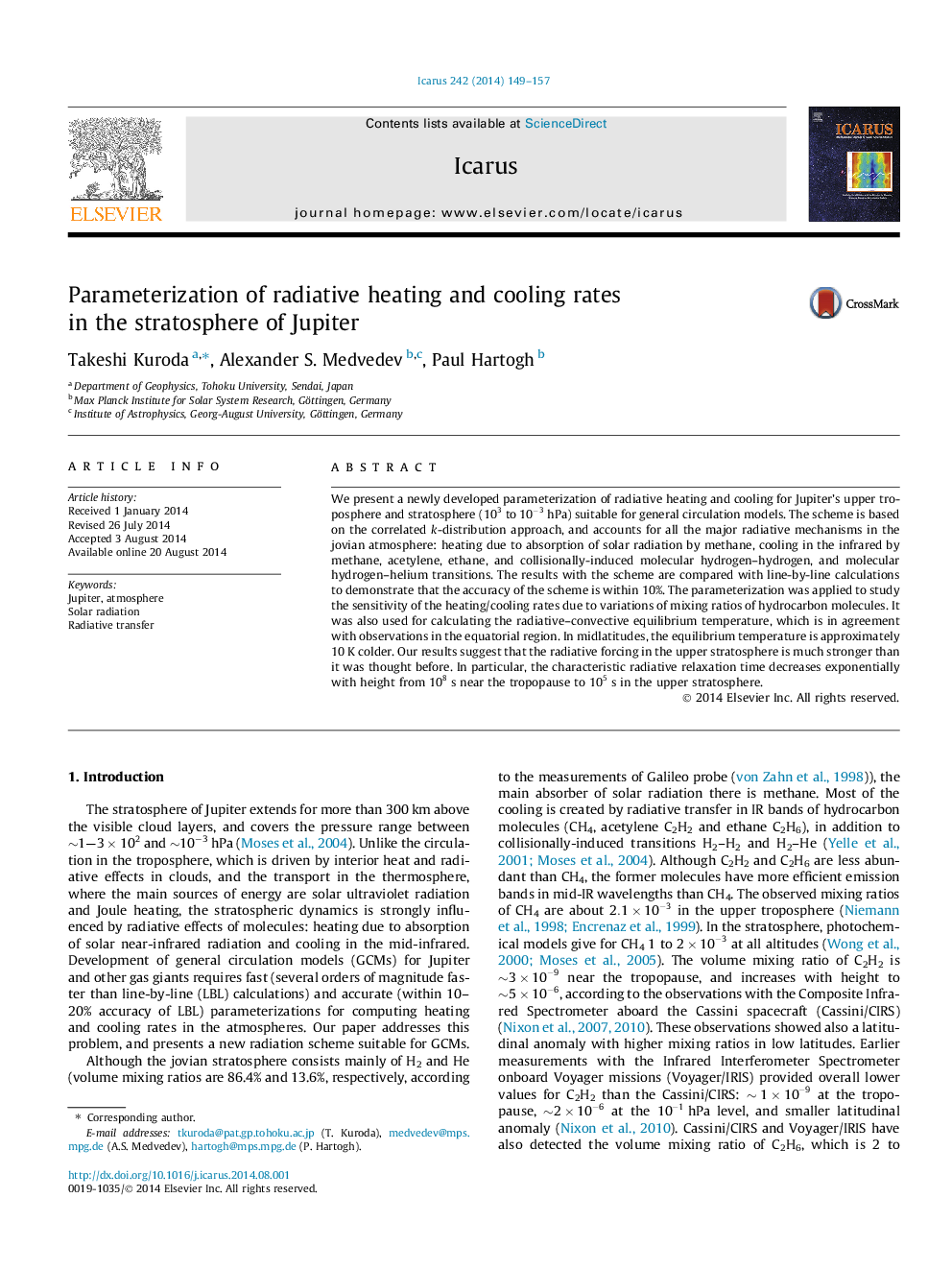| Article ID | Journal | Published Year | Pages | File Type |
|---|---|---|---|---|
| 8137612 | Icarus | 2014 | 9 Pages |
Abstract
We present a newly developed parameterization of radiative heating and cooling for Jupiter's upper troposphere and stratosphere (103 to 10-3hPa) suitable for general circulation models. The scheme is based on the correlated k-distribution approach, and accounts for all the major radiative mechanisms in the jovian atmosphere: heating due to absorption of solar radiation by methane, cooling in the infrared by methane, acetylene, ethane, and collisionally-induced molecular hydrogen-hydrogen, and molecular hydrogen-helium transitions. The results with the scheme are compared with line-by-line calculations to demonstrate that the accuracy of the scheme is within 10%. The parameterization was applied to study the sensitivity of the heating/cooling rates due to variations of mixing ratios of hydrocarbon molecules. It was also used for calculating the radiative-convective equilibrium temperature, which is in agreement with observations in the equatorial region. In midlatitudes, the equilibrium temperature is approximately 10Â K colder. Our results suggest that the radiative forcing in the upper stratosphere is much stronger than it was thought before. In particular, the characteristic radiative relaxation time decreases exponentially with height from 108s near the tropopause to 105s in the upper stratosphere.
Related Topics
Physical Sciences and Engineering
Earth and Planetary Sciences
Space and Planetary Science
Authors
Takeshi Kuroda, Alexander S. Medvedev, Paul Hartogh,
